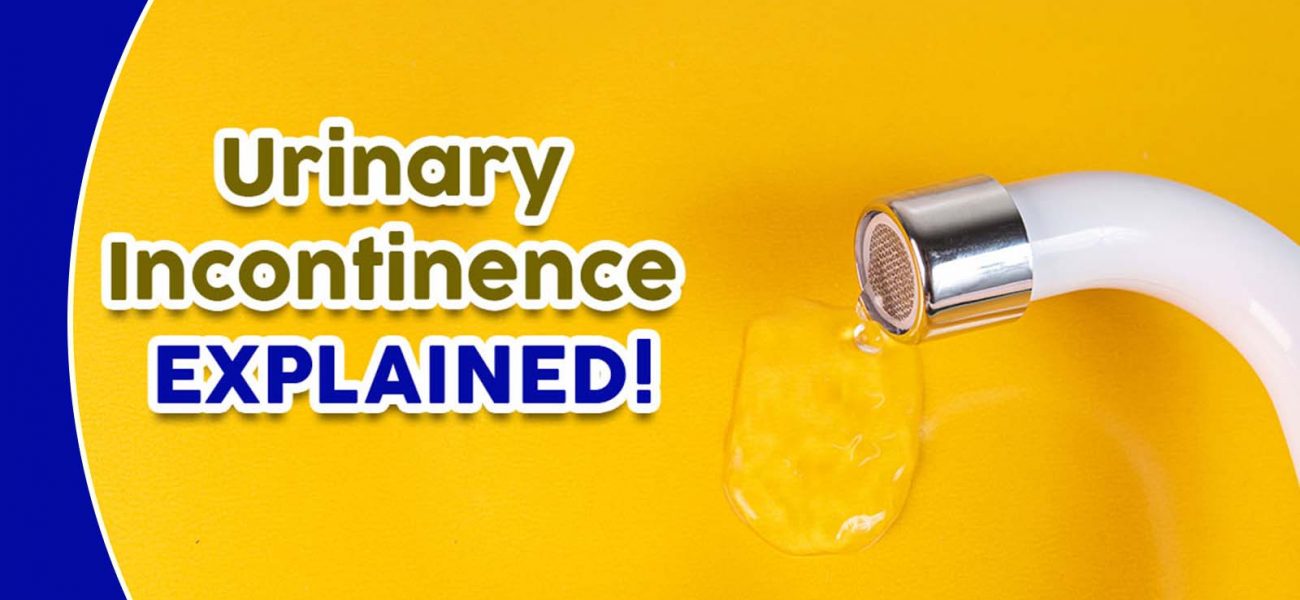Urinary incontinence: Explained!
Summary – Urinary incontinence is one of the difficult physical conditions which happens to older adults. Continue reading to get a detailed description of what it is, why it happens and a few of its common types.
Urinary incontinence refers to the involuntary release of urine which is caused by a weak bladder control. This happens either when a person loses control over the urinary sphincter or it gets weakened. Even though people of any age can succumb to it at any point in life, the older adults are more at risk. While younger adults can experience a speedy recovery by following a few easy lifestyle changes and bladder strengthening exercises, older people often need to seek serious medical assistance along with those lifestyle changes. However, not every older adult is going to suffer from it but a few of them depending on their medical history and health conditions.
The reason why it mostly happens to older adults is that with age, the urinary system of a person changes which includes the urethra, kidney and bladder which often triggers urinary leakage. It is more common in women as opposed to men. Around 58% of women and 5-15% of men are likely to suffer from urinary incontinence.
Below are three different types and symptoms of Urinary incontinence –
Stress Incontinence
Stress incontinence refers to the leakage which takes place whenever there is a sudden pressure on the bladder such as while laughing, sneezing, coughing, jumping or doing anything which can put an abrupt pressure on the bladder. The term stress here does not mean any emotional distress but pressure on the bladder. Women are more at risk of succumbing to stress incontinence as opposed to men. It happens when the muscles and tissues which support the urethra and muscles which control the urine release get weak.
Urge Incontinence
When you feel a sudden urge to empty your bladder you know you have urge incontinence. This urge is so sudden that it can often result in complete emptying of the bladder before you can make it to the toilet. This makes it the most difficult type of urinary incontinence as opposed to the others. What happens in urge incontinence is the urinary bladder experiences contractions when it is not supposed to. This causes some urine to leak through the sphincter muscles.
Mixed Incontinence
As the name suggests, mixed incontinence refers to the combination of both stress and urge incontinence. It includes the symptoms of both kinds such as leakage as you laugh, sneeze, cough, laugh, etc. and also have a persistent urge to empty your bladder. The treatment of mixed incontinence includes both the approaches used for stress and urge incontinence.
There are different treatments available for these types and one of them is performing some bladder strengthening exercises such as Kegel exercises. These are recommended by doctors as well. They can be performed anywhere anytime without much effort from your end. Just pretend that you are trying to stop the urine from flowing naturally, squeeze in the muscles for about ten to fifteen seconds and then release. Repeat two to three sets of ten repetitions every day to see a major difference to how your bladder feels. But, if you are already seeking medical help, discuss with your doctor before beginning with these exercises.
FAQ’s
2. What are the main types of urinary incontinence?
There are three primary types: stress incontinence, where leaks occur during laughter, coughing, or exercise; urge incontinence, marked by a sudden, strong need to urinate; and mixed incontinence, which combines both patterns. Identifying the right type is crucial because each responds differently to treatments. Stress leaks are often due to pelvic weakness, while urge incontinence relates to bladder sensitivity. Mixed type needs a combined approach. Recognizing which type you have helps guide your care, product choice, and lifestyle adjustments.
3. Can lifestyle changes help manage incontinence?
Yes. Healthy habits can greatly improve symptoms. Maintaining a balanced weight reduces bladder stress, while quitting smoking and limiting caffeine or alcohol lowers bladder irritation. Eating fiber-rich food helps prevent constipation that can worsen bladder control issues. Regular pelvic floor exercises (Kegels) and timed bathroom visits help in gaining better control. These steps can reduce frequency and urgency over time. Gradual changes—combined with hydration and avoiding triggers—can lead to significant improvements in daily comfort and confidence.
4. Do infections affect urinary incontinence?
Yes. Conditions like urinary tract infections (UTIs) irritate the bladder lining, causing frequent urges and weaker bladder control that can lead to leaks. These symptoms often improve once the infection is treated. Recurrent UTIs may indicate an underlying health issue, and consulting a doctor is advised. Maintaining sanitation, staying hydrated, and using absorbent hygiene products during infection periods can help reduce discomfort and manage leaks until healing occurs.
5. Is it possible to improve incontinence with exercise?
Absolutely. Pelvic floor exercises, or Kegels, are often suggested to help control stress-related leaks and improve bladder support. When done correctly—about three sets of ten contractions daily—these exercises strengthen muscles that help keep urine in during coughing, laughing, or lifting. Over time, users report fewer leaks and better bladder control. For urge incontinence, pairing pelvic floor exercises with bladder retraining helps increase the time between bathroom visits. Learning proper technique from a specialist ensures long-term benefit.
6. How does weight affect urinary incontinence?
Extra weight puts constant pressure on the bladder and pelvic floor, increasing the risk of leakage—especially stress-type leaks during movement. Even a modest weight loss can ease this pressure and improve bladder control. Pairing healthy nutrition with regular physical activity supports weight reduction, which in turn lessens bladder stress. When combined with pelvic floor exercises and reducing bladder irritants, a comprehensive lifestyle plan can significantly reduce symptoms and boost quality of life.
7. Can stress or diet worsen incontinence?
Yes. Stress and anxiety can disrupt signals between the brain and bladder, causing sudden urges or leaks. Foods and drinks like spicy meals, coffee, alcohol, and soda can also irritate the bladder lining and worsen symptoms. Keeping a diary helps identify personal triggers. Adopting a bladder-friendly diet, maintaining hydration steadily, and practicing stress-reducing techniques—like breathing exercises or mindfulness—can support bladder comfort and reduce accidents over time.
8. How helpful are hygiene products for urinary incontinence?
Absorbent products—like pant-style diapers or tape-style briefs—offer discreet protection from leaks and odor. Choosing the right fit, absorbency level, and design helps prevent skin irritation and supports longer wear. Many products include odor control layers and breathable covers. While these products don’t treat the condition, they allow daily activities without fear of accidents, improving self-esteem. Combined with lifestyle and behavior changes, they become an essential part of incontinence management.
9. When should someone seek medical help for incontinence?
If incontinence starts suddenly, worsens, or accompanies symptoms like pain while urinating, blood in urine, or frequent infections, consulting a healthcare provider is important. A doctor can diagnose the type of incontinence, suggest tests like urine checks, bladder scans, or pelvic evaluations, and guide treatment plans that may include therapy, medication, or referral to specialists. Seeking help early can prevent worsening symptoms and emotional stress associated with incontinence.
10. Can urinary incontinence be completely treated?
While some causes—notably infections or lifestyle triggers—can be reversed, others may require ongoing management. Behavioral strategies, exercises, weight control, and hygiene products significantly reduce symptoms for most individuals. Severe cases may benefit from advanced therapies or medical procedures, depending on the type. Though complete cure may not always be possible, many people achieve lasting comfort and independence with proper guidance and support, making incontinence a manageable condition rather than a barrier.






















